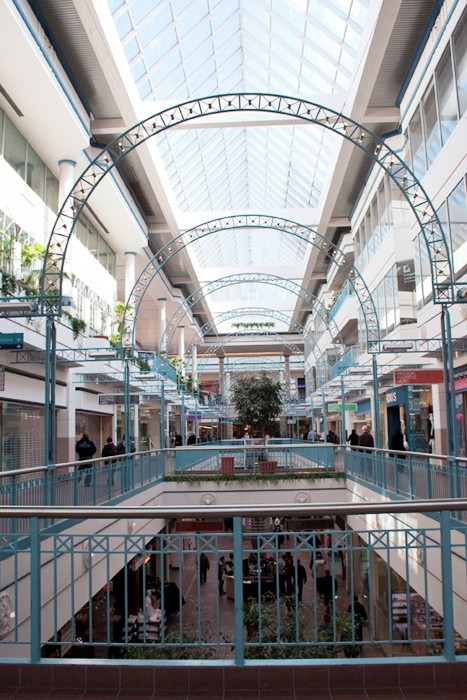Portage Place is ‘cheap’ without the ‘chic’
Report says mall must appeal to lower-income residents
Over the last 12 months, three large stores – Carlton Cards, Smart Set, and Barnes & Castle – along with several temporary kiosks and experimental stores have vacated Winnipeg’s Portage Place Shopping Centre. The result? A wealth of empty retail space in a mall that lags behind its competition in sales and desirability.
According to a 2009 report, Portage Place mainly appeals to a demographic of moderately-paid office workers, lower-income residents, students and senior citizens.
The report, conducted by MJB Consulting, a New York-based firm specializing in downtown development, pinpointed the food court as the mall’s primary source of traffic.
“The food court and entertainment bring people to the mall, and the retail follows from those services,” said Dave Stone, Portage Place mall manager. “It’s hard to tell from a retail perspective what our big draws are [right now].”
As a solution, the report recommended that Portage Place move toward “cross-over” brands and “cheap chic” retail items that are affordable for lower-income residents while still appealing to middle-income suburbanites who work and shop downtown.
Portage Place management has yet to implement changes based on the MJB report, but the Downtown BIZ and Centre Venture plan to meet with the firm in the months to come, said Stone.
Portage Place generates $250 per sq. ft. in monthly sales and charges retailers $15–$40 per sq. ft. in rent, well below the national average according to the MJB report.
Farther down Portage Avenue, Polo Park Shopping Centre manages between $550–$600 in sales and charges its retailers between $60–$90 per sq. ft. in monthly rent.
“Portage Place is completely different in terms of retail,” said Deborah Green, general manager of Polo Park. “The mix of our retail is the main draw to Polo Park.”
Portage Place used to attract high-calibre brands, but that attraction was mainly because the original developer, Cadillac Fairview, would force retailers to open there before “graduating” them to more desirable locations, like Polo Park, the MJB report stated.
Scott Krastel, a full-time employee at Portage Place, believes that the vacancies are due to scant nightly sales and a growing concern that the mall is an unsafe place to do business.
“After 6 [p.m.] the place is just a ghost town,” he said.
Krastel added that his store no longer schedules women for night shifts due to incidents of sexual harassment and minor theft over the last several years. As a result, Krastel has been forced to man the cashier on Thursday and Friday nights until 9 p.m.
“I’m a bigger guy, so I don’t face the same problems,” he said.
Stone responded by saying that security is adequate, but individual retailers are entitled to act in any way they feel appropriate.
Marta Jack, a store owner in Portage Place, doesn’t think a lack of safety is the main reason for business failure. Jack has been in retail for 50 years and has spent the last 13 as the proprietor of Mach Artworks, a store specializing in Canadian art and imported giftware.
“I worked at Polo Park for 24 years and I felt no more safe there than I do here,” she said, adding that security is tight, with patrols around the clock both in the mall and in the underground parkade.
She believes that the vacated stores are due to bad business practices rather than a failure of the mall as a whole.
“If you aren’t taking care of business, you shouldn’t be in business,” she said.
Published in Volume 64, Number 23 of The Uniter (March 18, 2010)







